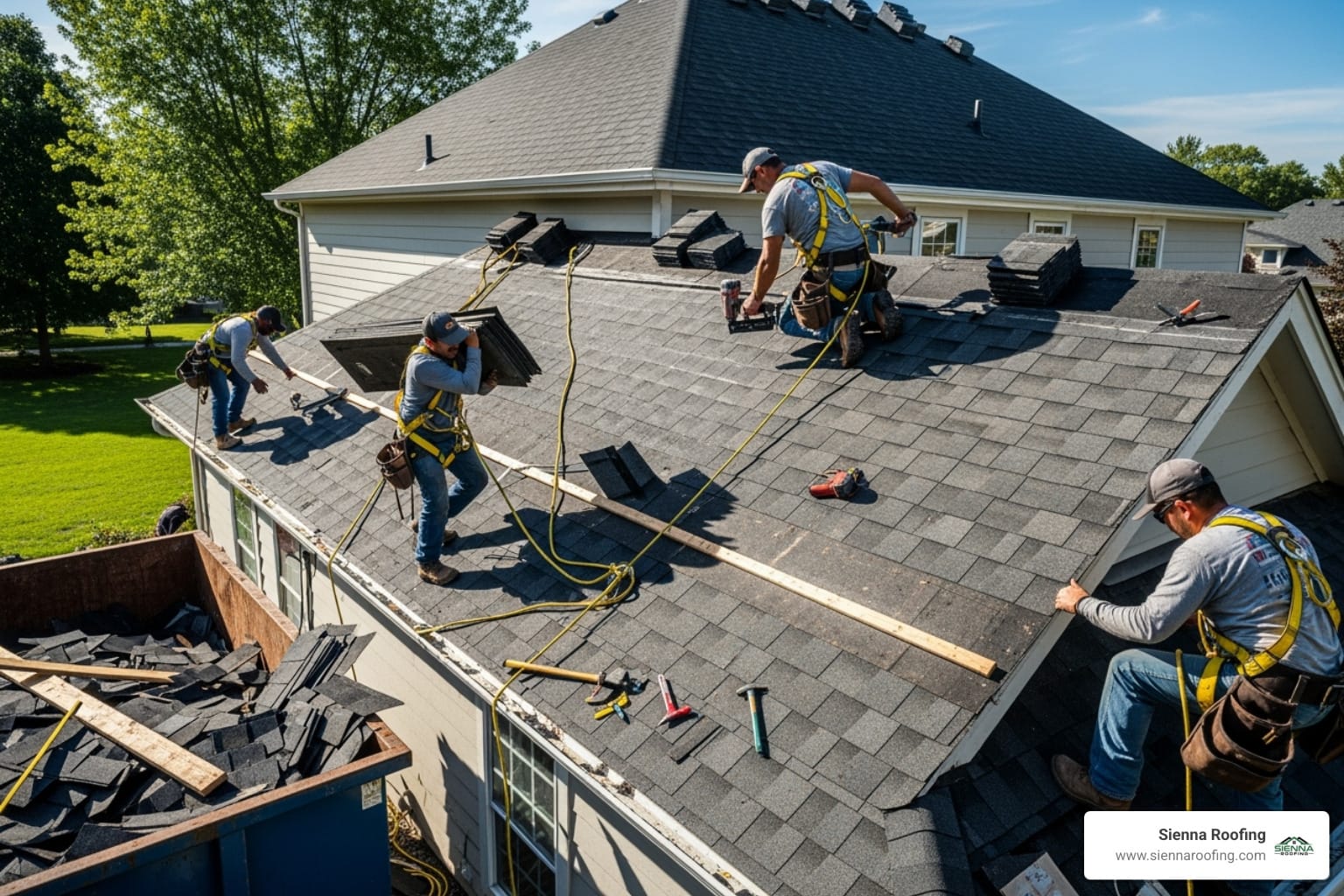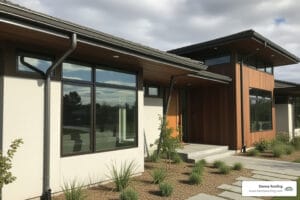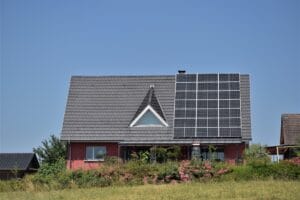New Roof Installation: Secure 2025 Guide
Why Understanding Your New Roof Installation Journey Matters
A new roof installation is one of the most significant investments you’ll make in your home, often ranking alongside a kitchen remodel or a new HVAC system in terms of importance and cost. It’s a decision that directly impacts your family’s safety, your property’s curb appeal, and its overall value for years to come. Whether you’re recovering from storm damage, addressing the wear and tear of an aging roof, or planning a proactive upgrade, understanding the process of getting a new roof for your home is crucial. A well-informed homeowner can steer the project with confidence, avoiding common pitfalls, navigating insurance claims effectively, and ensuring a high-quality result that saves time, money, and immense stress.
In Sugar Land and the greater Houston area, a roof does more than just keep the rain out. It’s your home’s first and most critical line of defense against a relentless barrage of subtropical weather. We face hurricane-force winds that can tear shingles from their moorings, damaging hail that can pulverize lesser materials, oppressive humidity that promotes algae growth and rot, and an intense summer sun that bakes and degrades roofing components. A failure in this primary shield doesn’t just lead to a leak; it can trigger a cascade of costly problems, from saturated insulation and ruined drywall to dangerous mold infestations and compromised structural integrity. The journey to a new roof involves several critical stages, each requiring professional expertise to guarantee a durable and long-lasting system built specifically for these demanding conditions.
The 5 Key Stages of a Professional New Roof Installation
A professional new roof installation is a systematic process, not just a matter of nailing on new shingles. Each step builds upon the last to create a cohesive, watertight system.
-
Inspection & Comprehensive Assessment: This is the foundation of a successful project. A true professional won’t just glance at your roof from the ground. They will perform a detailed, multi-point inspection that includes walking the entire roof surface to check for soft spots indicating rotted decking, examining flashing around chimneys, vents, and skylights, assessing the condition of pipe boots, and inspecting the ridge caps and ventilation system. They will also enter your attic to look for signs of leaks, inadequate ventilation, or structural issues. This thorough evaluation uncovers underlying problems that must be addressed to ensure the new roof performs as it should.
-
Material Selection & Strategic Planning: This is where your vision meets our expertise. We help you choose the right roofing system that can withstand Texas weather while balancing aesthetics, budget, and long-term performance goals. We’ll discuss the pros and cons of different materials, from high-performance architectural shingles to energy-efficient metal roofing. We also consider factors like your neighborhood’s HOA requirements and the architectural style of your home to ensure the final look is harmonious and beautiful.
-
Meticulous Preparation & Full Tear-off: The careful removal of all old roofing materials down to the structural deck is a non-negotiable step for a quality installation. Some contractors may suggest a cheaper “roof-over,” but this practice can hide serious problems like rotted wood and adds excessive weight to your home’s structure. During the tear-off, we protect your landscaping, windows, and siding with tarps. Once the old roof is removed, we conduct a second, detailed inspection of the wood decking, replacing any damaged or deteriorated panels to create a solid, secure foundation for your new roof.
-
Expert Installation of the Complete System: This is where craftsmanship truly shines. A modern roof is an integrated system of components. Our certified crews expertly install each layer in the correct sequence: a new ice and water shield in valleys and around penetrations, high-quality synthetic underlayment across the entire deck, starter strips along the eaves to prevent wind uplift, the primary roofing material (shingles or panels), and finally, proper ridge cap shingles and ventilation to allow your attic to breathe. This systematic approach, which typically takes 1-3 days, is essential for the roof’s longevity and the validity of the manufacturer’s warranty.
-
Final Inspection, Cleanup, and Walkthrough: Our job isn’t done until your property is pristine. After the installation is complete, a project manager performs a comprehensive quality check of the finished work. Our crew then conducts a meticulous cleanup, clearing all debris from your roof, gutters, and yard. We use high-powered magnetic rollers to find and remove stray nails from your lawn and driveway, ensuring the area is safe for your family and pets. We conclude with a final walkthrough with you, the homeowner, to answer any questions and ensure your complete satisfaction.
While the average cost for a new roof ranges from $6,000 to $18,000, this can vary based on factors like your roof’s size and complexity, the materials you choose, and the extent of any structural repairs needed. Most residential installations are completed within 1-3 days, although larger or more intricate designs may require more time.
I’m Andre Castro, CEO and founder of Sienna Roofing & Solar. With a degree in Construction Management from Texas A&M University and over five years of hands-on experience, I’ve personally overseen hundreds of new roof installation projects across the Houston Metro area. My team and I are committed to upholding the highest standards of quality, craftsmanship, and customer satisfaction, ensuring your investment protects your family for decades. We don’t just build roofs; we build relationships based on trust and exceptional results.

Is It Time? 7 Telltale Signs You Need a Roof Replacement
Your roof works tirelessly 24/7 to shield your home from the elements, but it has a finite lifespan. Recognizing when your roof is signaling distress is key to preventing catastrophic failure, which can lead to expensive water damage, structural rot, and frantic emergency calls during one of Houston’s notorious storms. The good news is that a roof rarely fails without warning. It provides clues long before a major breach occurs.

Learning to spot these signals early allows you to plan your new roof installation on your own terms, not in a crisis. Here are seven key indicators to watch for, from the subtle to the severe:
-
Curling, Cracking, or Clawing Shingles: This is a classic sign of an aging asphalt roof reaching the end of its life. Over years of exposure to the intense Texas sun, the volatile oils in the asphalt evaporate, causing the shingles to shrink and lose flexibility. This can manifest in two ways: “curling,” where the edges turn upward, or “clawing,” where the middle lifts and the edges stay flat. Both expose the underlying layers to moisture and make the shingles extremely brittle and highly susceptible to being torn off by wind.
-
Missing Shingles or Damaged Flashing: While a single missing shingle might seem like a minor issue, it’s a critical breach in your roof’s armor. Houston’s high winds can easily exploit this vulnerability, leading to a “zipper effect” where surrounding shingles are torn off, exposing large sections of your roof deck. Pay close attention to areas around chimneys, vents, and skylights. The metal flashing in these areas can rust, crack, or pull away, creating a direct path for water into your home.
-
Excessive Granule Loss in Gutters: Those sand-like particles in your gutters are the ceramic-coated mineral granules from your asphalt shingles. They are the primary shield against damaging UV radiation and also contribute to the shingle’s fire resistance. While some loss is normal on a new roof, if you notice large amounts of granules washing out with every rain, it’s a sign that your shingles are becoming “bald.” They are losing their protection, becoming brittle, and rapidly approaching the end of their service life.
-
Your Roof’s Age is 20+ Years: According to the National Association of Home Builders, a typical asphalt shingle roof lasts about 20 years. While some premium materials can last longer, the harsh combination of Houston’s extreme heat, high humidity, and severe weather often accelerates the aging process. Poor attic ventilation can trap heat and moisture, effectively “cooking” your shingles from below and shortening their lifespan even further. If your roof is hitting the two-decade mark, it’s time to start budgeting for a replacement, even if it looks okay from the ground.
-
Chronic Water Stains on Ceilings or Walls: Those unsightly brown or yellow stains are definitive proof of an active leak. Water has already bypassed your entire roofing system and is soaking into your home’s interior structure. The visible stain is often just the tip of the iceberg; the actual leak source in the roof could be many feet away. By the time you see a stain, hidden moisture may have already led to rotted wood framing, destroyed insulation (losing its R-value), and the growth of hazardous mold, which can pose serious health risks to your family.
-
A Sagging or Drooping Roof Deck: This is a major structural red flag that demands immediate attention and is a sign of a potential collapse. A dip, bow, or “saddleback” in your roofline indicates that the underlying sheathing or rafters are weakened, most likely due to prolonged moisture absorption and rot. This is not a cosmetic issue; a sagging roof has lost its structural integrity. Do not walk on a sagging roof. Call a professional immediately for an emergency assessment.
-
Daylight Visible Through the Roof Boards: If you go into your attic on a sunny day and can see streams of light coming through the roof, you have obvious holes. These gaps are direct entry points for rain, pests like squirrels and raccoons, and outside air. This not only leads to water damage but also creates a significant breach in your home’s thermal envelope, causing your heated or cooled air to escape and leading to much higher energy bills.
The High Cost of Procrastination
Ignoring these warning signs is a gamble against the next Houston storm. What might start as a minor issue, like a few cracked shingles, can quickly escalate. A small, contained leak can saturate insulation, rot the roof deck, and lead to mold growth inside your walls. By the time the problem becomes unavoidable, you’re no longer looking at a simple repair. You’re facing a full new roof installation plus costly interior remediation for water and mold damage. Being proactive is the single most effective way to control costs and protect your home’s value.
If you’re noticing any of these warning signs, don’t gamble with the next forecast. A professional roof inspection will provide a clear, honest assessment of your roof’s health, complete with photographic evidence, empowering you to make the best decision for your home. Taking action early is the surest way to save money and avoid future headaches.
Decoding Your Options: Choosing the Right Roofing Material for Texas Homes
Selecting the perfect roofing material for your new roof installation is one of the most critical decisions you’ll make as a homeowner. In the Houston area, your choice must account for a unique set of environmental challenges, from the threat of hurricane-force winds and baseball-sized hail to scorching summer temperatures that can push roof surface temperatures well above 150°F. The right material not only defines your home’s aesthetic but also dictates its ability to protect your family and your investment for decades to come.
When planning your new roof installation, climate-specific performance should be your top priority. Key factors include hurricane resistance for storm season, impact rating for hail, energy efficiency to lower cooling costs during brutal Texas summers, and overall durability to ensure your investment stands the test of time. Choosing a “cool roof” with high solar reflectivity can significantly reduce heat absorption, a crucial benefit in our climate that can lead to tangible savings on your energy bills.

Here’s how the most popular roofing materials stack up for our Texas climate:
| Material | Lifespan | Cost (Initial) | Key Benefits for Houston Climate |
|---|---|---|---|
| Asphalt Shingles | 15-30 years | $ | Cost-effective, variety of styles, good wind resistance with proper installation |
| Metal Roofing | 50+ years | $$$ | Superior storm resistance, reflects heat to reduce cooling costs, fire resistant |
| Tile Roofing | 50+ years | $$$$ | Excellent insulation, hurricane resistant, beautiful Spanish aesthetic |
Asphalt Shingles: The most common roofing material in the U.S., asphalt shingles offer a fantastic balance of performance, style, and affordability. Modern architectural shingles (or dimensional shingles) are the standard today, far superior to the older, flat 3-tab shingles. They are thicker, heavier, and constructed with multiple layers, which gives them a rich, textured appearance and significantly better durability. For the Houston climate, look for shingles with a 130-mph wind warranty and a Class 4 impact rating, the highest available for hail resistance. Many top brands like GAF and Owens Corning also offer shingles with algae-resistant technology (like Scotchgard™ Protector) to prevent the ugly black streaks common in our humid environment.
Metal Roofing: Once reserved for commercial buildings, metal roofing has become a premier choice for Texas homeowners seeking ultimate durability and energy efficiency. Its performance in severe weather is unmatched; standing seam metal roofs are engineered to withstand hurricane-force winds and easily shed hail. Critically for our climate, metal roofs are highly reflective. According to the Department of Energy, a reflective metal roof can reduce summer cooling costs by 10-25%. The most popular style is “standing seam,” which uses concealed fasteners for a sleek, modern look and maximum weather-tightness. While the initial cost is higher, the 50+ year lifespan, minimal maintenance, and energy savings provide an excellent long-term return on investment.
Tile Roofing: For ultimate longevity and a distinctive, upscale look, tile is an exceptional choice. Available in traditional clay or durable concrete, tile roofs offer superior insulation, are virtually impervious to fire and rot, and can be engineered to withstand the strongest hurricane winds. As FEMA notes in its guides for hurricane-prone regions, properly installed tile roofs have excellent performance records. They are, however, very heavy and require a structural assessment to ensure your home’s framing can support the load. While it is the most expensive option upfront, a tile roof’s lifespan can exceed 100 years, potentially making it the last roof you’ll ever need to buy.
Composite (Synthetic) Roofing: A rapidly growing category, composite shingles offer the best of both worlds. They are engineered to realistically mimic the appearance of natural slate or wood shakes without the associated high cost, heavy weight, or intensive maintenance. Made from a blend of recycled plastics and other sustainable materials, these shingles are incredibly durable, often carrying a Class 4 impact rating and a Class A fire rating. They are lightweight, long-lasting (50+ year warranties are common), and resistant to cracking, fading, and moisture absorption, making them an excellent high-end choice for a new roof installation in Texas.
As the Energy.gov Roofing Materials Guide highlights, your material choice has a direct impact on your home’s energy consumption. When making your decision, consider the total cost of ownership, which includes not just the upfront price but also future energy savings, maintenance needs, and replacement frequency.
Your Trusted Local Roofing Experts
Choosing the right material is just the first step. For homeowners in the Sugar Land area, partnering with a reliable, local contractor is crucial for a successful installation. A local company understands the specific building codes and insurance requirements of Fort Bend County. We live here, we work here, and our reputation in the community is our most valuable asset. At Sienna Roofing, we’re proud to be part of this community and are dedicated to providing our neighbors with the highest level of service and craftsmanship.
- Name: Sienna Roofing
- Address: 17034 University Blvd, Sugar Land, TX 77479
- Phone: (832) 564-3322
- Map:




